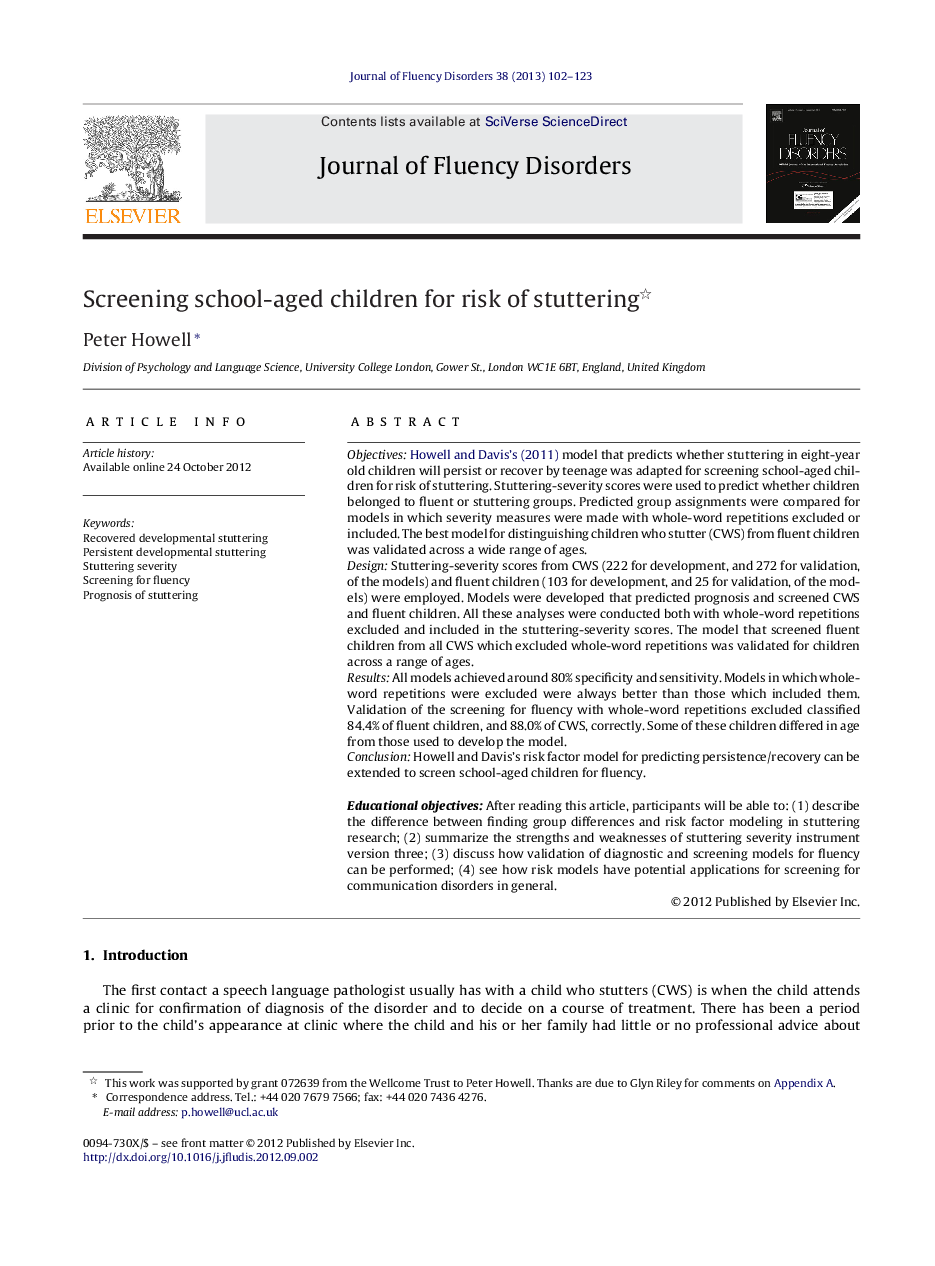| کد مقاله | کد نشریه | سال انتشار | مقاله انگلیسی | نسخه تمام متن |
|---|---|---|---|---|
| 911366 | 917918 | 2013 | 22 صفحه PDF | دانلود رایگان |

ObjectivesHowell and Davis's (2011) model that predicts whether stuttering in eight-year old children will persist or recover by teenage was adapted for screening school-aged children for risk of stuttering. Stuttering-severity scores were used to predict whether children belonged to fluent or stuttering groups. Predicted group assignments were compared for models in which severity measures were made with whole-word repetitions excluded or included. The best model for distinguishing children who stutter (CWS) from fluent children was validated across a wide range of ages.DesignStuttering-severity scores from CWS (222 for development, and 272 for validation, of the models) and fluent children (103 for development, and 25 for validation, of the models) were employed. Models were developed that predicted prognosis and screened CWS and fluent children. All these analyses were conducted both with whole-word repetitions excluded and included in the stuttering-severity scores. The model that screened fluent children from all CWS which excluded whole-word repetitions was validated for children across a range of ages.ResultsAll models achieved around 80% specificity and sensitivity. Models in which whole-word repetitions were excluded were always better than those which included them. Validation of the screening for fluency with whole-word repetitions excluded classified 84.4% of fluent children, and 88.0% of CWS, correctly. Some of these children differed in age from those used to develop the model.ConclusionHowell and Davis's risk factor model for predicting persistence/recovery can be extended to screen school-aged children for fluency.Educational objectives: After reading this article, participants will be able to: (1) describe the difference between finding group differences and risk factor modeling in stuttering research; (2) summarize the strengths and weaknesses of stuttering severity instrument version three; (3) discuss how validation of diagnostic and screening models for fluency can be performed; (4) see how risk models have potential applications for screening for communication disorders in general.
► Model shows persistence or recovery can be predicted with 80% specificity and sensitivity.
► The diagnostic models show screening (fluent children from children who stutter) can be achieved.
► The diagnostic model is applicable across a wide range of ages (not just those that were used in its development).
Journal: Journal of Fluency Disorders - Volume 38, Issue 2, June 2013, Pages 102–123